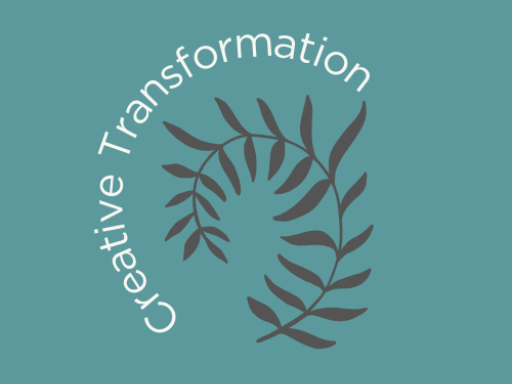Tag: inspirational coaching

It is said that we teach best what we most need to learn. I am a pretty good teacher on a number of things, but particularly on self acceptance!
I am embarking tomorrow on a 7 week online mindfulness course. I am doing this for a number of reasons.
- I realise
that more often than I would wish, I run away from being kindly present with myself and I wish to change that. - I am a single parent with an only child and parents who live on the other side of the world. As such, I find this run up to the ‘Festive Season of Love and Light’ challenging.
- It is also said that ‘We are what we habitually do.’ I know that I often have great intuition, insight and sensitivity, and I also know that I find it difficult to maintain those qualities on a habitual day to day basis and I need help with achieving a daily nourishing reminder.
Compassionate Presence vs Running Away
I have worked long enough with people to know that I am not alone in this. What I know is that when I scratch below the surface, almost everyone has a place where they face the challenge of themselves, more or less successfully. And I think it might help me and others for me to articulate some of the challenges I face in myself and seek to overcome.
In many ways, I love my life. I row, play tennis, sing, hike, camp, body surf when I get the chance, and much too little dance and play music. I have a job I love and a wonderful daughter and good friends.
How is it, that with all that, I can run away from myself? Well, I do. I notice that when left to myself, if I am not careful, and certainly if I am not thriving for any reason, I run away from myself, tune out, self numb or whatever you like to call it. Occasionally I tell myself I am not so bad, because the activities I choose are relatively innocuous – I watch other people live life on film instead of living it myself (under the heading of chilling out), I play rather a frightening amount of sudoku and free cell (under the heading of keeping my brain active), and rather less innocuously, from time to time, I smoke (under the heading of, well, it only harms me, and I don’t have vices like getting drunk or having loads of sex with random people, and I need some form of sensual outlet).
One of my favourite authors, Salley Vickers, talks in her book, ‘The Other Side of You’, about what passes for love often being a decidedly mixed bag: lust, anxiety, lack of self-worth, sadism, masochism, cowardice, fear, recklessness, self-glory, simple brutality, the need to control, the urge to be looked after; most dangerous of all, the desire to save. There are other, happier, ingredients: kindness, compassion, honour, friendship, sympathy, the wish to help, the attendant wish to be good, though these finer impulses can often wreak more havoc then the more blackguardly ones.
I cite this, because I think it is worth looking at in terms of relationship to others, but also because I think that ‘innocuous’ ways of running away from ourselves can also wreak more havoc than more blackguardly ones. We can convince ourselves that we are doing really important work that needs our time and attention, we can do charitable works or do sport, music or other things that are good in themselves, but can equally masquerade as ways of avoiding being quietly and compassionately present with ourselves.
‘Nothing has a stronger influence psychologically on their environment and especially on their children than the unlived life of the parent.’
—Carl Gustav Jung
As a parent, I am painfully aware of the truth of this statement. If for no other reason than to enable my daughter to live a full and happy life, I would like to truly live my life. And I have done enough work on self awareness to know that those ways I have of trying to escape myself, whether seemingly innocuous or not, will have, and have had, an impact on her. So I am doing my best to find strategies for facing myself, acknowledging my vulnerabilities and giving myself the love and compassion that I need to thrive.
We are what we habitually do
I also know from my work, that it takes 300 repetitions to create a new neural pathway, and 3000 to repetitions to break an old one!
I see it as no accident that all the major religions have about 5 calls a day to prayer. It seems that we all need help and reminding to come back to ourselves, to loving presence, and the means to live fully.
In my work I have developed a great sensitivity which enables me to tune into the pain of others, be that physical, mental, emotional, spiritual or energetic. But as Brene Brown says, we cannot selectively numb. I have told many of my clients who are deeply sensitive that sensitivity brings many riches, but if we don’t pay it attention, care for it and manage it well, it can wreak havoc.
I am a person who feels the highs and lows of life, and do not naturally flow along on an even keel, so I need to take care, and to develop the daily management of my sensitivity.
I am going to pay it attention in the next 7 weeks, and will report back on my progress!
TOP TIPS FOR DEALING WITH STRESS
USING ALEXANDER TECHNIQUE AND COACHING PRINCIPLES AS STRATEGIES FOR STRESS MANAGEMENT.
Alexander Technique principles are very simple, yet very profound when diligently applied.
The Principles in Everyday Language are these:
- INCREASE AWARENESS (FORM A CLEAR INTENTION TO DO THIS!)
- PAUSE
- USE CONSCIOUS DIRECTION/INTENTION
- PAY ATTENTION TO THE PROCESS
- REPEAT UNTIL NEW HABIT IS FORMED.
INTENTION
INTENTION is my all time favourite word! Learn to develop a clear intention for your life, for your term, for your week, for your day. Then when you get discombobulated, you can remind yourself of your intention about anything in general or specific. You can notice whether what you are thinking or doing aligns with your intention, and the stronger you can hold your intention, the easier it becomes to align your actions. Truly powerful people, I believe, are those whose actions are most closely aligned with their intentions. Scarily, that applies in the negative sense as well as the positive, so take care in developing your intention!
BREATHE!
In one sense, breathing is an enormously complex activity, in that once again, it often reflects anxieties, fears and difficulties – and research has shown that this also includes difficulties that your mother had in pregnancy before her pelvic physiotherapy! That explains why we don’t always find it easy to breathe freely and deeply. However, once again we can go back to the word INTENTION, and have the intention to breathe deeply and freely (even when we encounter our deep/old fears, which can sometimes be the cause for the feelings of faintness when we begin to release tension and breathe).
So have the intention to notice your breathing, and how, very often, when you are concentrating hard, or you are tense/anxious, you will find you are hardly breathing. It is impossible to breathe deeply when you holding extreme tension in your body, but equally, it is impossible to retain that tension when breathing deeply. So noticing shallow breath/held breath and deciding to breathe deeply (and freely) at each point of your noticing, helps break the cycle of tension and allows something different to happen, even if momentarily. Over time, this can make a huge difference in your level of pain or tension.
So the answer is to FEEL THE FEAR AND DO IT ANYWAY. Don’t repress your pain/fear/anger, but keep breathing, and breathe into that pain and through it. Amazing what this ‘simple’ thing can achieve!
AWARENESS – BODILY AND OTHERWISE
Learn to use your awareness as you would use peripheral vision. So make that an intention, and then see if you can allow yourself to be more aware of your body while doing other things. I believe that the body doesn’t lie, and it can become your best friend. When you are confused as to what you are thinking/feeling, your body will usually hold the answer. If you try and repress/suppress your feelings, your body will usually at some stage flag up what you are repressing by demonstrating to you your emotional pain in some physical way that makes you stop and pay attention.
CHOOSING YOUR THOUGHTS/ DEALING WITH OBSESSIVE THOUGHTS
We have +/- 40,000 thoughts a day and how many are under our control? Not very many is often the answer! This is the problem of the Pink Elephant – the more you tell yourself not to think of it, the bigger the image becomes in your mind! So we need to choose our thoughts, and once again we come back to the work INTENTION. If you have the intention to truly take care of yourself, then you will be more able to choose what to think, if you know that your obsessive thinking is not helping you.
PRACTICAL STRATEGIES FOR ACHIEVING THIS:
1. Bring your attention to your body by simply placing a hand/hands on your centre of gravity (few fingers below your navel). Remind yourself of your stability and strength and
2. Breathe!
3. Keep taking your attention outside yourself – I find it hugely helpful to notice nature – light, colour, water, wind, and particularly combining walking with noticing nature.
4. Create Boundaries. Notice whether talking about problems makes you feel better/feeds the obsession/makes you feel tense. Choose carefully to whom you speak/interact so that again, your INTENTION is to support yourself. Try and create time boundaries for dealing with/thinking about/talking about your problem, and if you are struggling with that, ask the other person to hold the time boundary for you. This way, you will still get to feel heard, which is very important, but will not be tempted to obsess.
5. Gratitude Diary – your Homework, should you choose to accept it.
Find at least 3 things each day, for which you are grateful.
The danger is that difficult issues can consume you, and of course there is so much else in your life about which you can choose to think and to which you can give your energy, which will nourish you, bring you joy and also support your INTENTION for a full and happy life. Our thoughts create a DIRECTION for our lives, and to some extent, create our life itself, so what we choose to focus on, and to think about, is HUGELY important. Have the INTENTION to bring to mind one or more of those things for which you are grateful, whenever you start feeling anxious/angry.
I fully realise that while all these things are pretty simple, that is not to say that they are easy.
Neuroscience research tells us it takes 3,000 repetitions(!) to break old neural pathways, so this will not be sorted in a day, and can seem tedious if you feel that you are getting somewhere with it, and then the old thoughts and habits kick in.
Again, INTENTION will help you stick with it
Neuroscientists also tell us that our thoughts create our reality – we are processing a staggering 400 billion actions per second in our brain, and every thought that we build actually changes the structure of the brain and impacts on the health of the body. (Dr Caroline Leaf, Neuroscientist).
So Science is now able to confirm the basis of the Alexander Technique, where we use conscious thoughts, intentions and directions to alter the way we respond to our everyday situations. And we can better understand that even if our situation does not change, we can alter our reality by our response to that situation, and choose health and well being over stress.
APPENDIX
Most people do not really relate to the Language used by Alexander Technique, particularly as it was developed in the late 1800s! Hence my initial translation into everyday language.
But for those who do know the language, and who want to see how I arrived at my ‘version’, here it is!
In ‘Alexander Technique Language’ these would be expressed as follows:
- REALISE YOU HAVE FAULTY SENSORY AWARENESS
- INHIBIT
- USE CONSCIOUS CONTROL TO PROJECT NEW DIRECTIONS
- PREVENT END GAINING AND PAY ATTENTION TO THE MEANS WHEREBY
- REPEAT UNTIL OLD UNHELPFUL HABIT IS REPLACED BY NEW HABIT
In ‘Coaching Language’ these would be expressed as follows:
- BECOME MORE AWARE SO THAT ‘CONSCIOUS INCOMPETENCE’ BECOMES ‘CONSCIOUS INCOMPETENCE’
- PRACTICE NEW HABITS TO CHANGE ‘CONSCIOUS INCOMPETENCE’ TO ‘CONSCIOUS COMPETENCE’
- REPEAT UNTIL ‘CONSCIOUS COMPETENCE’ BECOMES ‘UNCONSCIOUS COMPETENCE’
This Business of Coaching
In the film ‘You’ve got Mail’, the character Joe Fox of Fox Books goes to visit Kathleen Kelly of the Independent Book Store ‘The Shop Around the Corner’, to tell her that forcing her to close her store was ‘not Personal, it was Business’. Her reply ran something along these lines: ‘What do you mean it was not personal? It was personal to me. And whatever anything else is, it ought to BEGIN by being personal.’
The World of Business likes to think of itself as being very Left Brain focussed – analytical, detailed. However, recent Neuroscience suggests that our world is focussing too much on the Left Brain, and ignoring the Right Brain at its peril – losing the bigger picture, creativity and spontaneity. It also suggests that rather than decision making being a critical, analytical process, our decisions are most often driven by emotion, thereby giving some explanation as to why a judge listening to a difficult case, is far more likely to return a positive verdict after lunch, when his hunger is satisfied, than he is before lunch when his hunger is dictating how his brain is focussed.
While many companies claim to award contracts on the basis of variables such as pricing and skill sets, the truth may often be that they felt more comfortable and relaxed with one set of providers than another, even if, on paper, their bid was less palatable than some of those rejected.
In the Business of Coaching, various labels are now bandied about, such as ‘Business Coaching, Executive Coaching, Performance Coaching’. I would argue that these are merely labels, and that the principles of coaching remain the same whether dealing with a High Flying Business Executive who is dealing with multi-faceted business issues, or a mother who wants to know how to motivate her children to help clean the house!
Every Business Executive is as much a person as is a mother who has chosen to stay at home to support her children, or student who is dealing with the challenges of moving from home to University, or office worker who doesn’t know how to deal with a co-worker whom he finds irritating.
A business decision made by an Executive who feels threatened or under pressure, could be very different from made by that same person if he/she was feeling confident and supported – both in home life and business. This fact underlines the value of coaching, be it labelled ‘Executive’, ‘Performance’, ‘Business’ or simply ‘Coaching’.
The process of coaching seeks to assist the client or coachee, to be able to work through issues and ‘problems’ (or opportunities, if you are feeling positive and optimistic), to be able to operate from a place of quiet self assurance and confidence,which enables him/her to make decisions that will be most appropriate and useful for him/herself, rather than making decisions that will make him/her feel safe and better about him/herself, but ones which perhaps do not benefit the business that he/she is in.
Daniel Goleman, in his book Emotional Intelligence, notes that really good leaders often have a lower IQ than their team, but score highly on EQ (Emotional Intelligence).
Characteristics of Emotional Intelligence are:*
- Self Awareness: the ability to realistically ‘see’ ourselves and be aware of our goals, beliefs, values, drivers, ‘rules’ (our ‘oughts’ and ‘shoulds’) and our self-talk (both positive and negative)
- Self-regulation: trustworthiness, integrity, confidence, walks the talk
- Motivation: self and others, optimistic, inspirational, passionate
- Empathy: awareness of others’ feelings, needs and concerns
- Social Skills: strong listening and & communication skills, manages conflict, centred, trusts others and ‘open’.
* copyright: D.Barnard, www.relationaldynamics1st.co.uk
Businesses are beginning to recognise the value of a Coaching style of leadership, which usually reflects high emotional intelligence. Coaching assists in the development of Emotional Intelligence, as defined above and can enable Executives to manage more effectively, and Managers to develop more efficient, empowered and happier teams.
This of course, does no harm to the bottom line!

 ” Think of it like the sea – there will always be another wave and another high tide – sometimes you just have to wait”
” Think of it like the sea – there will always be another wave and another high tide – sometimes you just have to wait”
